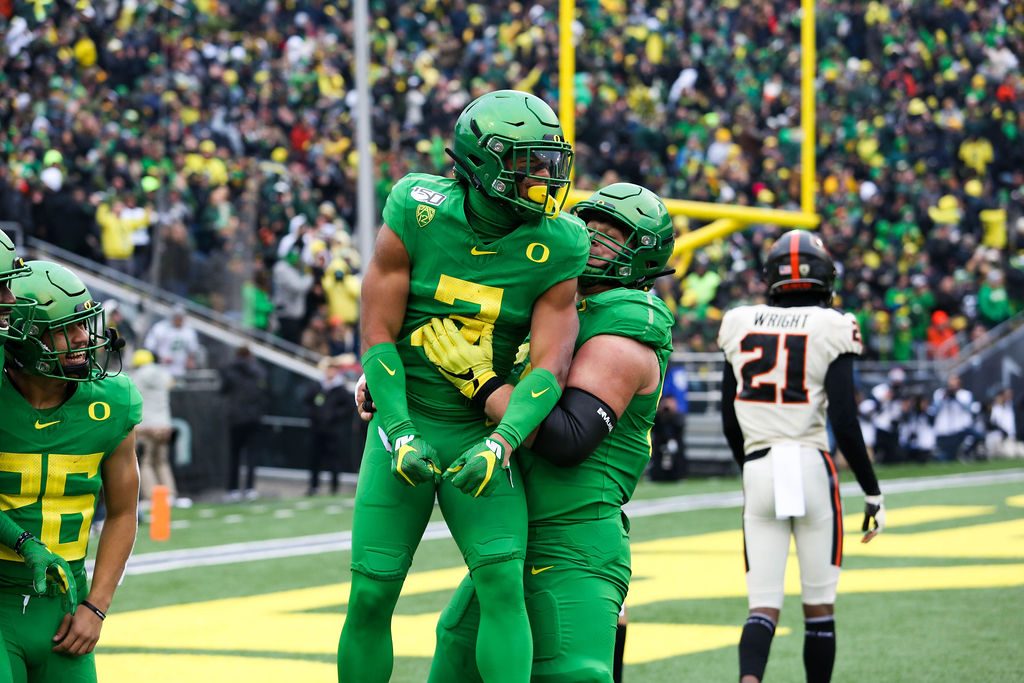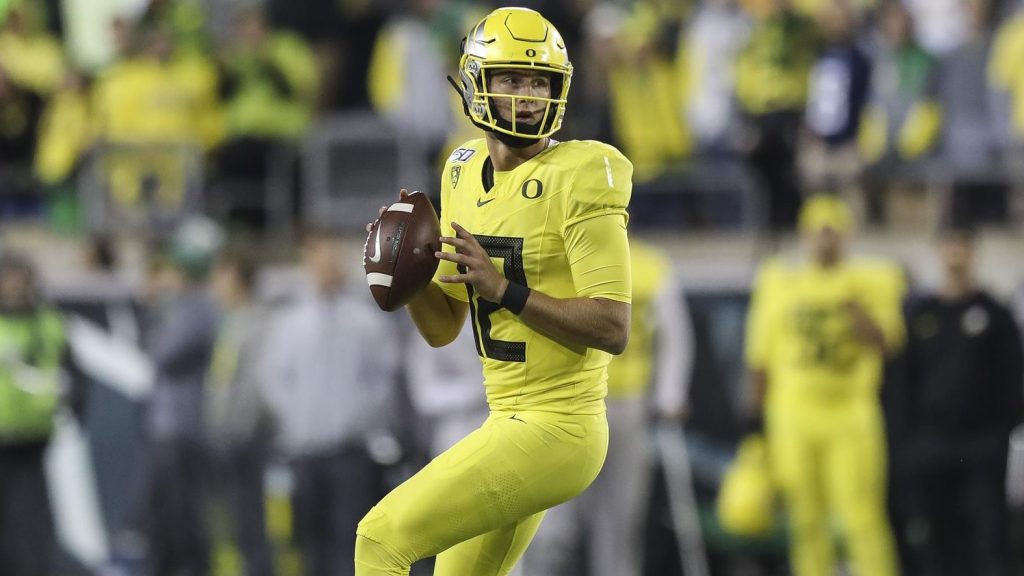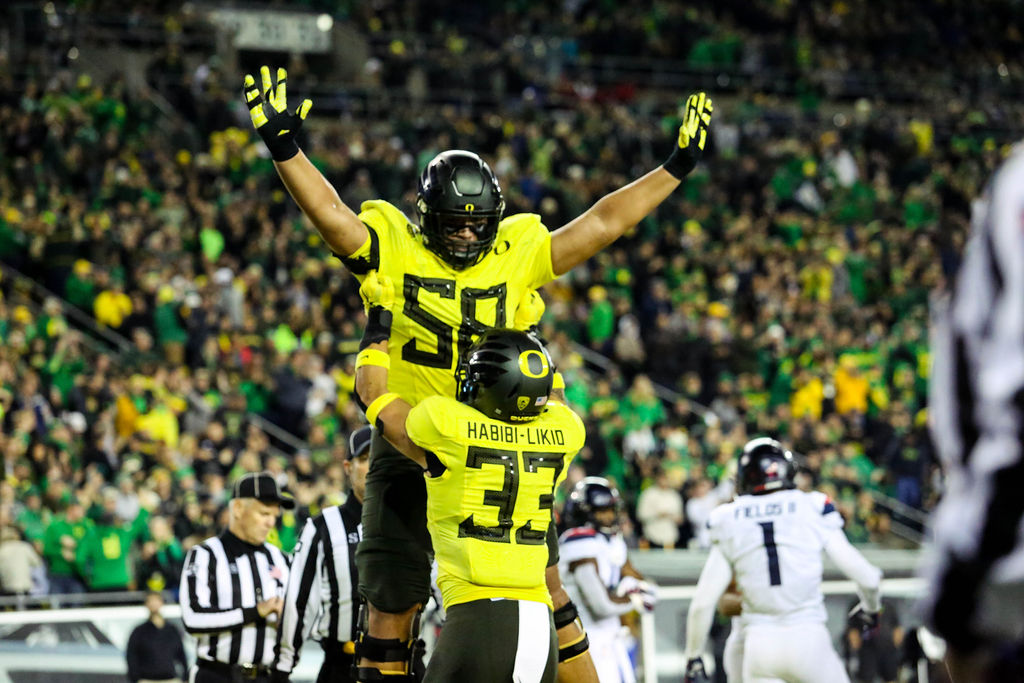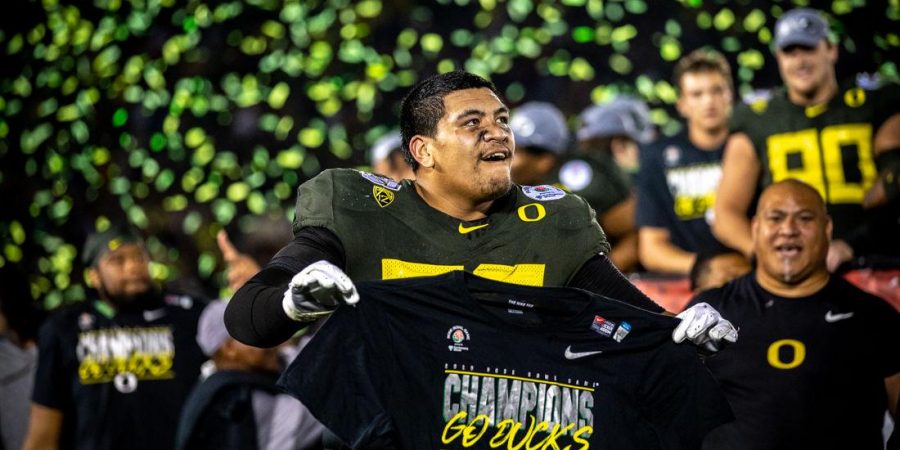The outcome of any given college football season can rest on a variety of factors, but perhaps the most important factor relating to team success during the course of a season is depth and the general availability of top talent.
Injuries are an unfortunate reality for every program, and every fan base has a story or twelve about what could have been if not for an injury to Player X. Oregon fans are certainly no strangers to this painful truth, as Dennis Dixon’s torn ACL in 2007, Vernon Adams’ broken finger in 2015, and Justin Herbert’s broken collarbone in 2017, are just a few recent top of mind examples that offer a reminder of just how razor-thin the margin can be between a great season and one that leaves fans wondering, “What if?”
As we prepare for the (hopeful) start of the 2020 college football season amidst a global pandemic, WFOD takes a closer look at the players – both on offense and defense – who are most critical in ensuring a successful season on the field for the Ducks. Today we begin with a look at the offensive side of the ball.

3. Johnny Johnson
Rewind to this time last year, and Duck fans would have likely questioned your sanity had you placed Johnny Johnson on a list such as this. A year later, however, and Johnson is a major reason for why the Ducks may have the most underrated group of receivers in the Pac-12.
After enduring a tough sophomore campaign underscored by frustrating drops and generally inconsistent play, the Chandler, Ariz. native responded in impressive fashion as a junior in 2019, leading the Ducks in receptions (57), receiving yards (836), and receiving touchdowns (7) while playing some of his best ball at the end of the Ducks’ championship season. His breakout 10-catch, 207-yard, two-touchdown performance in last season’s late season loss at Arizona State helped cement Johnson as a go-to receiver in the Oregon offense moving forward.
That’s precisely the role he’ll carry with him entering his final fall camp, as Johnson leads a group, alongside fellow senior Jaylon Redd, that is chock full of potential breakout candidates such as Devon Williams, Mycah Pittman, and Bryan Addison. Without a player of his experience level and proven production on the field, the learning curve for the Ducks’ young receiving stars (not to mention a new quarterback) would be far more daunting, particularly given the early portion of Oregon’s schedule.

2. The loser of the QB1 battle between Tyler Shough and Anthony Brown
For the first time since 2016, the Ducks will be entering an upcoming season without true clarity surrounding the no. 1 spot atop the quarterback depth chart.
Four years ago, highly-touted Montana State transfer Dakota Prukop won the job over a cadre of competitors that featured names like Jeff Lockie, Travis Jonsen, Terry Wilson, and Justin Herbert. Prukop’s time in the saddle, however, lasted for all of five weeks before Herbert, a true freshman at the time, eventually took over for good (despite an inauspicious start to his career that began with a 70-21 drubbing at the hands of hated rival Washington).
Fast forward to the present, and a roughly similar quarterback quandary faces Mario Cristobal as it once did Mark Helfrich.
Redshirt sophomore and projected starter Tyler Shough entered the spring as the Ducks starting quarterback and promptly exited holding the same title after four days of COVID-shorten practices. Of course, all of the distance Shough was able to maintain on the competition this spring was done minus the presence of Boston College grad transfer Anthony Brown, who announced his departure to Oregon on April 1. On campus and currently working out with teammates, the two are widely expected to be the primary contenders filling Herbert’s shoes this fall.
But as cliché as it may sound, the winner of the prospective fall camp battle between Shough and Brown may very well prove to be not as important as who is there at end of the season.
Considering first year offensive coordinator Joe Moorhead’s stated desire to offer more rushing opportunities for quarterbacks within his offense, it’s expected that Shough and Brown will be carrying a few extra bruises over the course of the season. Neverminding the fact that football is inherently violent, this is particularly notable in Brown’s case, as the former three-year starter for the Eagles has suffered two season-ending knee injuries in that span.
To what degree the quarterback’s injury risk is heighten in Moorhead’s vision of Oregon’s offense is not yet known, but assuming the heighten risk is there, there’s an easy-to-imagine scenario in which the outcome of Oregon’s season hinges on the availability and performance from the loser of the Shough-Brown Showdown (patent pending) later this summer.

1. Penei Sewell
No mental gymnastics or hot-take debate is required when it comes to determining who the most indispensable player on offense is for Oregon heading into the 2020 season. A mainstay at left tackle since arriving on campus prior to the 2018 season, it could be argued that reigning Outland Trophy winner Penei Sewell is not just the most indispensable player on the Oregon roster, but perhaps the most indispensable player in the country.
Entering what is in all likelihood his final season in Eugene before heading off to the NFL, Sewell serves as the quintessential anchor for an offensive line unit that will be tasked with finding four new starters following the graduation of grizzled veterans such as Shane Lemieux, Calvin Throckmorton, Jake Hanson, Dallas Warmack, and oft-relied upon reserve, Brady Aiello. Though Cristobal and offensive line coach Alex Mirabal have been bullish on the talent that is expected to replace that experienced core, Sewell’s rock solid presence offers a sense of calm and competency that simply cannot be replicated by a replacement-level player.
Those who balk at that idea need look no further than midway through the 2018 season, as Sewell needed just six games to stake his claim as arguably the team’s top lineman amongst a talent-laden group. Unfortunately for Sewell and the Ducks, a high ankle sprain suffered in Oregon’s overtime victory vs. Washington sidelined him for the remainder of the regular season. His absence on the field was tangibly felt from that point forward, as the Oregon offense dipped in every standard major statistical category, notably averaging 33.86 more yards of total offense and more than a touchdown per game (6.6 points/game) with Sewell in the lineup opposed to when he was out.
Factor in the youth and inexperience taking the field alongside Sewell in the trenches this season, and the offensive disparity we saw in 2018 could be even wider in 2020 should the Ducks be forced to survive without Sewell for any extended period of time.
Top Photo: Oregon OL Penei Sewell holds up his Rose Bowl championship shirt as confetti goes off. (Maddie Knight/Emerald)

